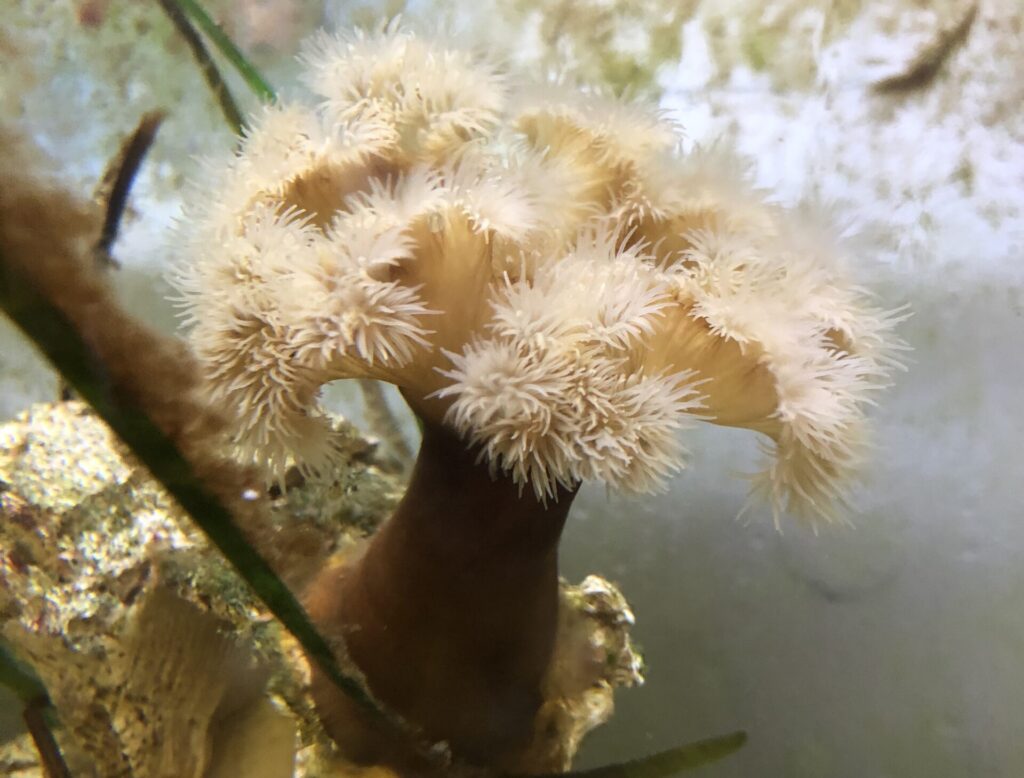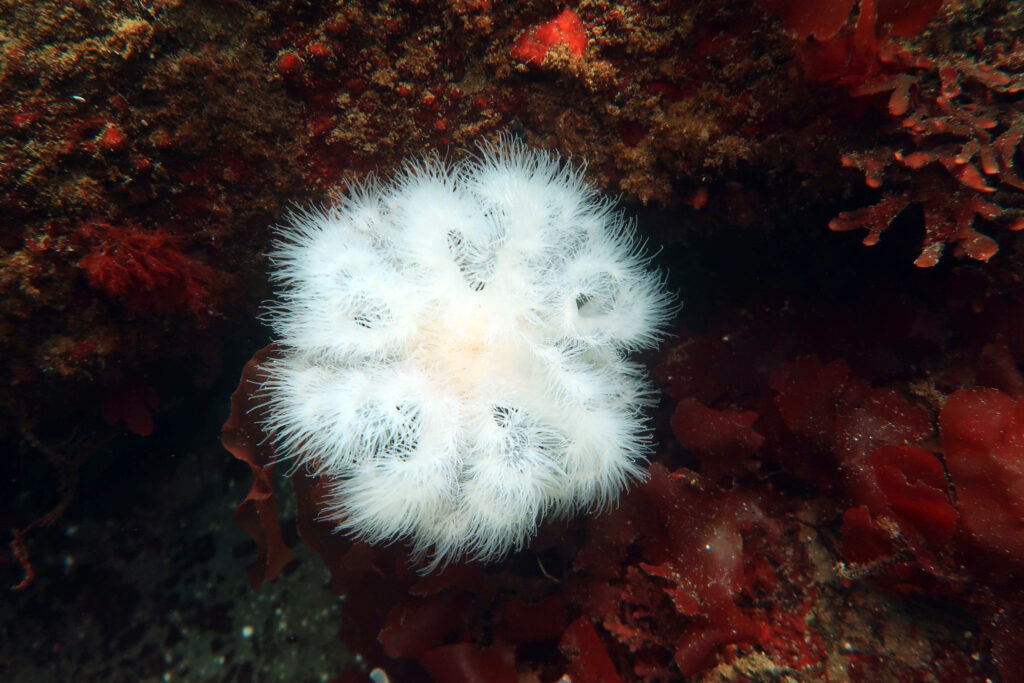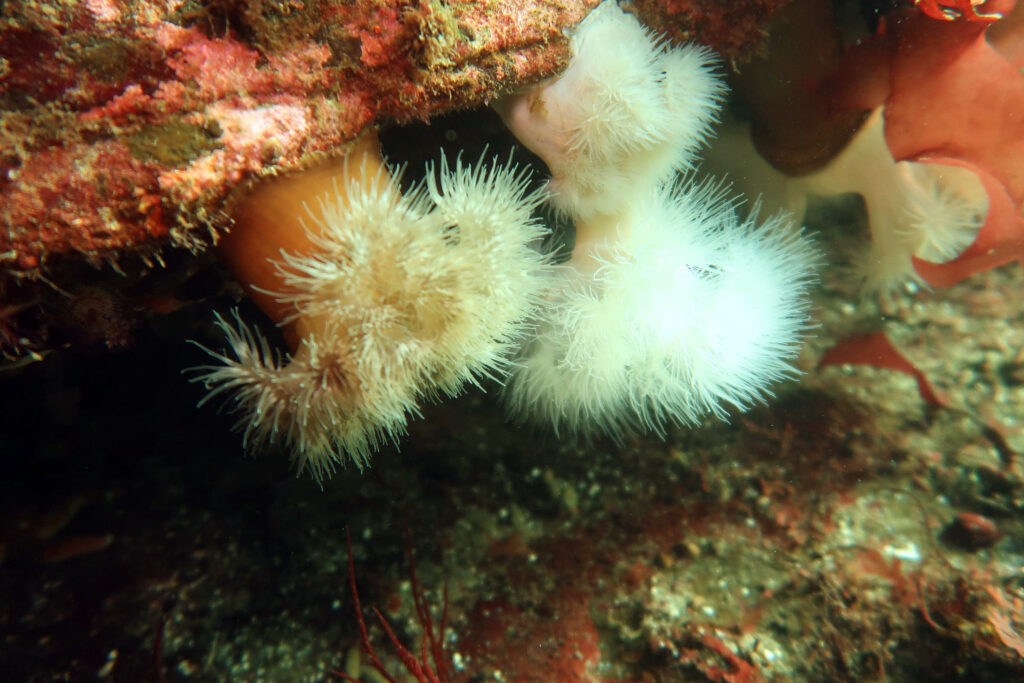Short Plumose Anemone (Metridium senile)

Short plumose anemones are a common species of anemone that is found at high latitudes, from the intertidal zone to about 300 m depth. Locally, their range is from northern Alaska to southern California. Short plumose anemones can be up to 10 cm tall and 5 cm across at their base. They are often found carpeting the ocean floor in shallow areas with strong currents. They adhere to hard surfaces and use water currents to hunt; as food drifts by, they trap it with their sticky tentacles. These anemones are not picky eaters, and will consume anything that sticks to their tentacles. This often includes copepods, various larvae, and amphipods.

Short plumose anemones have a long, smooth column which is covered in mucus to prevent predation. At the top of the column is a broad, deeply lobed oral disk covered in slender, pointed tentacles. The tentacles vary in length, with the shortest tentacles around the edges of the disk, and longer tentacles closer to the center. Short plumose anemones are highly variable in colour; they can be white, cream, pink, orange, red, green or anything in between.

Short plumose anemones can reproduce sexually or asexually. Asexual reproduction can occur in two different ways. The first, called binary fission, occurs when an anemone splits in half and each half reform into a new anemone. The second, called budding, occurs when a small fragment of an anemone breaks off and becomes a new anemone. Sexual reproduction generally happens during the summer. Anemones release their gametes into the water column, where they combine to produce larvae. The larvae drift through the water for the first part of their lives, and eventually sink to the sea floor and grow into new anemones.
For more information, check out Central Coast Biodiversity.


